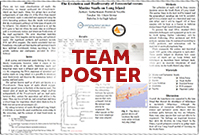

- Program:
- Urban Barcode Project
- Year:
- 2019-20
- Research Topic:
- Biodiversity & trade
- Taxonomic Group Studied:
- Animals: Invertebrate
Project:
Mosquito Diversity: An Urban & Suburban Cross-Section
- Students:
- Arly Rodriquez, Lourdes Geraldo
- School:
- Rye Country Day School, Other
- Mentors:
- Jennifer Busuttil-Doran
Abstract:
Mosquitoes are one of the most dangerous animals in the world [1]. They are apex predators and have been around since the Jurassic period. They are a part of a very complex food web, not only do they provide a food resource for many primary and secondary consumers, but they also act as pollinators. Some mosquito species are considered invasive species, like the Asian tiger and other types of species, can spread many devastating diseases. To date, scientists have identified three thousand (3000) species of mosquitoes, but there are only three (3) species of mosquitoes that are primarily responsible for the spread of human diseases such as the West Nile Virus, Zika, Malaria, Eastern Equine Encephalitis (EEE), and Dengue. The most common species found in New York are the Anopheles quadrimaculatus, Culex pipiens, Aedes aegypti and Aedes albopictus. The ability to identify mosquito species is a critical element of risk assessment and the implementation of preventative strategies [10]. The a

